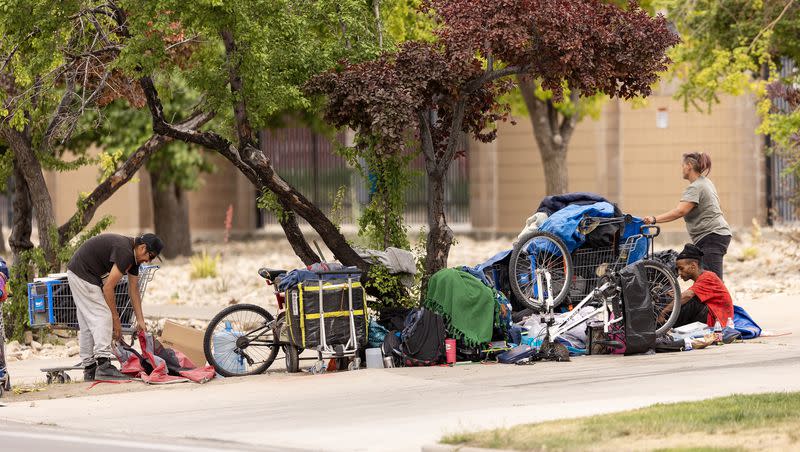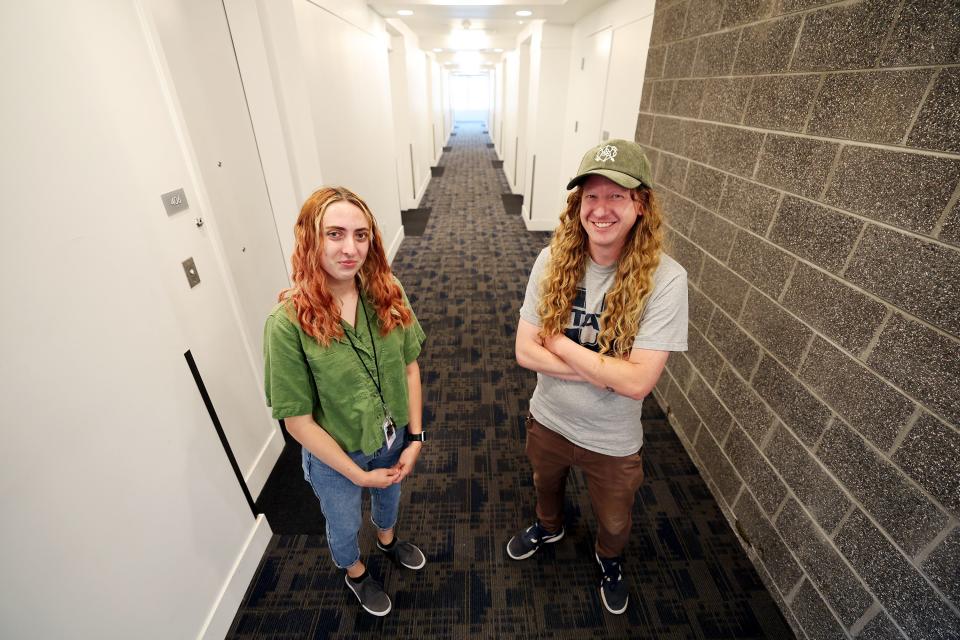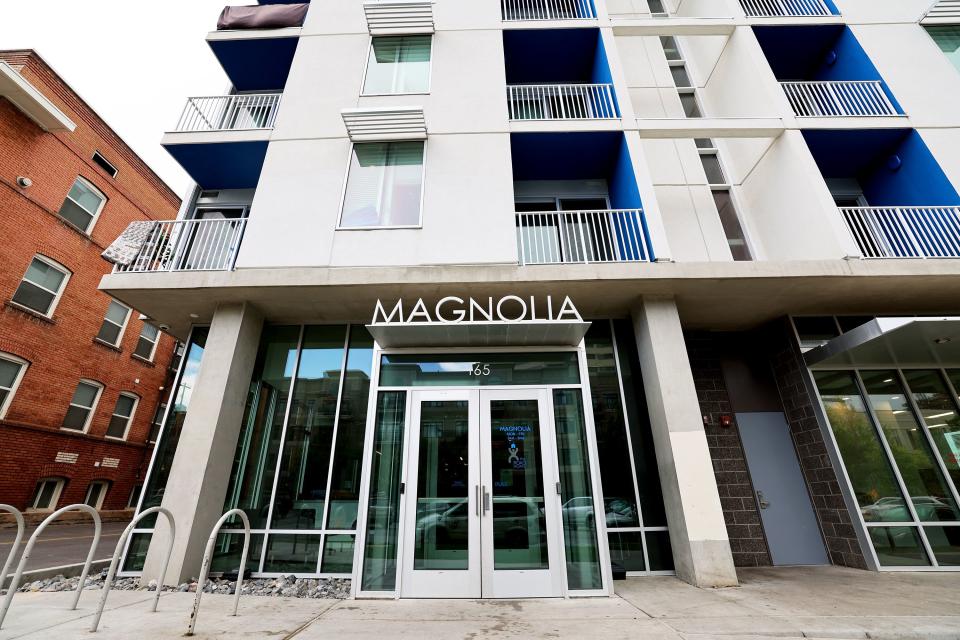Report: ‘Concerning increase’ in numbers of Utahns experiencing chronic homelessness

As total numbers of people experiencing homelessness slightly increased from a year ago, Utah is making headway in developing deeply affordable housing, according to a new state report on homelessness.
The new 2023 Annual Data Report on Homelessness also reflects the success of supporting permanent housing developments but at the same time, reveals “a concerning increase” in the number of individuals experiencing chronic homelessness.
Wayne Niederhauser, state homelessness coordinator, points to $55 million in grants appropriated by the Utah Legislature that will fund 17 projects, creating more than 1,100 income-restricted affordable units.
“Housing is the answer and we’re making progress with that like we probably have never done before,” he said. “We still have a long way to go with supportive services.”
The report shows 8,637 experienced homelessness for the first time in 2022, an increase of 821 people compared to federal fiscal year 2021. This measure counts the number of people experiencing homelessness for the first time in the reporting period, including people entering emergency shelters, transitional housing and all permanent housing projects.
“This 10% rise indicates a slower growth rate compared to the preceding year’s 14% increase, aligning with the national trend of rising homelessness since 2017,” the report states.
However, the report also shows the average duration of homelessness in Utah’s emergency shelters decreased to about 65 days, a continuation of a downward trend. The decrease was largely driven by a rise in the number of people who stay in a shelter for 30 days or less, accounting for 57% of all sheltered individuals in Utah. Meanwhile, the percentage of people staying in shelters for nine months or longer increased to about 6% of all individuals served, according to the report.
Overall, Utah’s rate of homelessness remains below the national average, with approximately 11 individuals experiencing homelessness per 10,000 people, compared to the national rate of 18 per 10,000 people.
The annual 2023 Point-in-Time count, conducted in January as a statewide one-night count, revealed a 3.7% increase in the number of individuals experiencing homelessness compared to the previous year.
The state’s annual data report, prepared by the Utah Department of Workforce Services’ Utah Office of Homeless Services, also showed a 96% increase in the number of people experiencing chronic homelessness in Utah since 2019.
Chronic homelessness refers to people who have experienced homelessness for at least a year, either continuously or in four or more separate instances within the past three years, while also experiencing a disabling condition such as a physical disability, severe mental illness or substance use disorder.
Some of the increase in the numbers of chronically homeless individuals may be attributed to improvements in data collections but also the dearth of deeply affordable housing in Utah and support for people struggling with issues that can contribute to homelessness.
“Housing instability is a pressing issue that often leads to homelessness and a rising demand for crisis response services,” said Tricia Davis, assistant director of the Office of Homeless Services.
“With the conclusion of pandemic-era funding resources and the increase in living costs, service providers are facing an increased demand for their services, as highlighted in the 2023 Annual Data Report,” she said.
The report points to the efficacy of permanent supportive housing, as “93% of individuals enrolled in permanent housing, excluding rapid rehousing, successfully exited to or maintained their permanent housing. This high success rate underscores the effectiveness of these projects, especially when compared to crisis response initiatives like street outreach and emergency shelter alone, which have a higher percentage of individuals returning to homelessness.”
The Magnolia, a newer supportive housing complex near downtown Salt Lake City, houses single men and women in studio apartments and offers an array of supportive services for residents.
Opened in 2021, it was developed in a public-private partnership and owned by the nonprofit organization Shelter the Homeless.
The Road Home, which operates the facility, recently launched a program to provide on-site mental health care in a partnership with Fourth Street Clinic and the Huntsman Mental Health Institute. Mental health care providers meet residents where they live, respond to mental health crises, prescribe medications and work to bring treatment-resistant residents into care.
Michelle Flynn, executive director of The Road Home, said the significant increase in people experiencing chronic homelessness may be attributed to better data collection but is likely also tied to several years passing without developing additional permanent supportive housing.

“We had a big burst of permanent supportive housing for a few years, and then, really not much for quite some time. We’ve been really, really struggling to find the kind of housing for people experiencing chronic homelessness with the supports that they need,” she said.
Some of the current residents of the Magnolia had been housed but “really struggled and were evicted, a lot because of mental health issues and substance use issues, but primarily mental health issues. The population of people we have living there are really even higher needs than we had anticipated,” Flynn said.
The Point-In-Time count found the subpopulation of adults with mental illness increased significantly year over year, increasing from 979 in 2022 to 1,500 in 2023, sheltered and unsheltered individuals combined.
Despite the successes of the model, developing permanent supportive housing is challenging because it costs more than other approaches and “it’s not something that can be developed without some kind of government funding,” Flynn said.
The Magnolia was developed by Cowboy Partners. While developer Dan Lofgren has considerable experience in the affordable housing space, this was the first time he had ventured into developing supportive housing.
“It was really valuable to have them as a partner,” Flynn said.
The Magnolia operates at capacity and any time a unit comes open, the vacancy is shared with other homeless services providers via the Salt Lake Valley Coalition to End Homelessness.
“People are prioritized based on their needs, their vulnerabilities and they’re matched with whatever units might be coming open. There’s certainly more needs as are units,” Flynn said.


